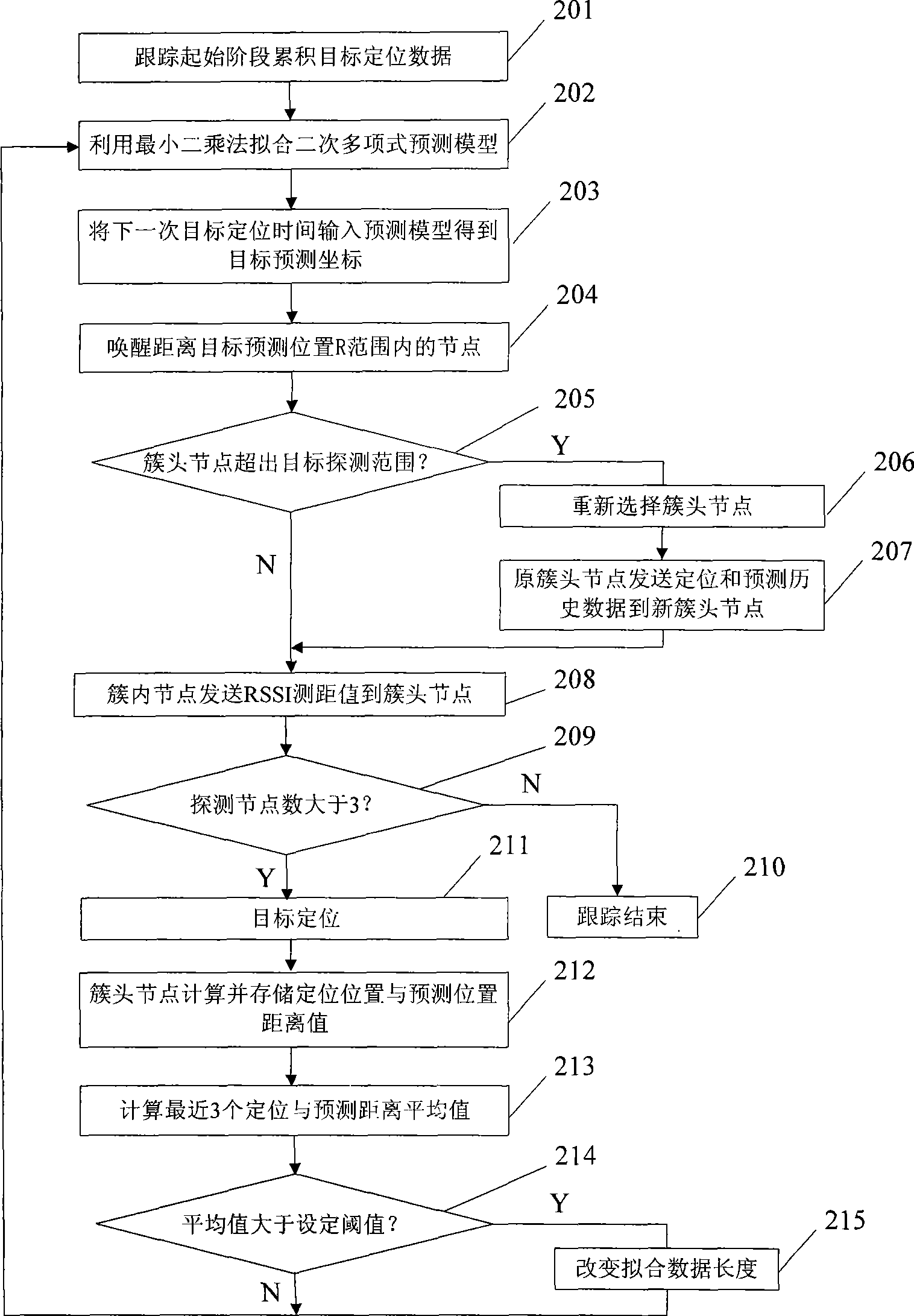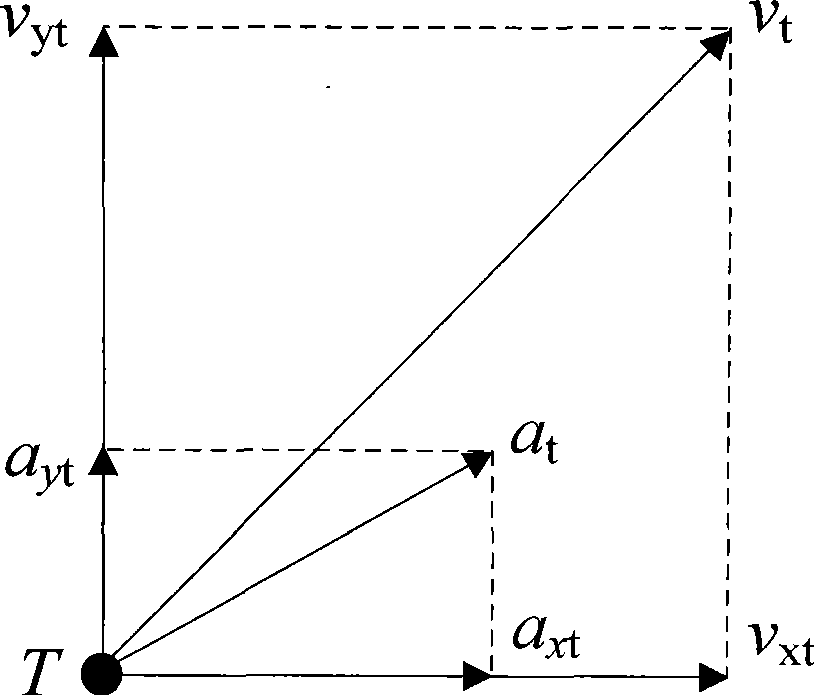Wireless sensor network tracking method based on self-adapting prediction
A wireless sensor and self-adaptive prediction technology, applied in radio wave measurement systems, instruments, measurement devices, etc., can solve problems such as large changes in target motion laws and target positioning errors, reduce the probability of target loss, and improve robustness. Sticky, impact-reducing effect
- Summary
- Abstract
- Description
- Claims
- Application Information
AI Technical Summary
Problems solved by technology
Method used
Image
Examples
Embodiment Construction
[0027] In order to make the purpose, technical solutions and advantages of the present invention clearer, the implementation of the present invention will be further described in detail below in conjunction with the accompanying drawings:
[0028] see figure 1 , this embodiment provides a wireless sensor network target tracking method based on adaptive prediction, the method obtains the target prediction model by fitting the target positioning coordinates and positioning time, and adaptively adjusts the prediction model according to the predicted coordinates and positioning coordinates, specifically Include the following steps:
[0029] Step 101: the cluster head node fits the target positioning coordinates and time at the current moment and more than two moments adjacent to the current moment, and obtains a quadratic polynomial prediction model describing the relationship between the target X coordinate or Y coordinate and time;
[0030] Step 102: the cluster head node uses ...
PUM
 Login to View More
Login to View More Abstract
Description
Claims
Application Information
 Login to View More
Login to View More - R&D
- Intellectual Property
- Life Sciences
- Materials
- Tech Scout
- Unparalleled Data Quality
- Higher Quality Content
- 60% Fewer Hallucinations
Browse by: Latest US Patents, China's latest patents, Technical Efficacy Thesaurus, Application Domain, Technology Topic, Popular Technical Reports.
© 2025 PatSnap. All rights reserved.Legal|Privacy policy|Modern Slavery Act Transparency Statement|Sitemap|About US| Contact US: help@patsnap.com



